The head gasket on the Gen3 Prius is more likely to fail than on most other Toyota models. The affected years are 2010, 2011, 2012, 2013, 2014, and 2015. I’ve never seen a problem with the earlier generations, and so far, there have been no issues with the Gen4 (2016 and newer).
Common symptoms are rattling and shaking and/or the following trouble codes: P0300, P0301, P0302, P0303, P0304, P3190, P3191, and P0A0F
If you found this page, I’m guessing your mechanic found a leaking head gasket on your Prius.
If you have questions, you’ve come to the right place. In this article I’ll be answering the following:
- What’s a head gasket?
- What happens when a head gasket fails?
- What caused the head gasket to leak, and can it be prevented?
- Can you keep driving without replacing the head gasket?
- What’s included with a Prius head gasket job?
- How much does a Prius head gasket cost to replace?
- Will the estimate increase once the disassembly and inspection is complete?
- Will the car be “good as new” once the head gasket is replaced?
What is a head gasket
Most gasoline engines have two main components: the cylinder head and the cylinder block. The head gasket seals three areas at the joint between the head and block:
- Combustion chamber
- Water jacket
- Oil galley
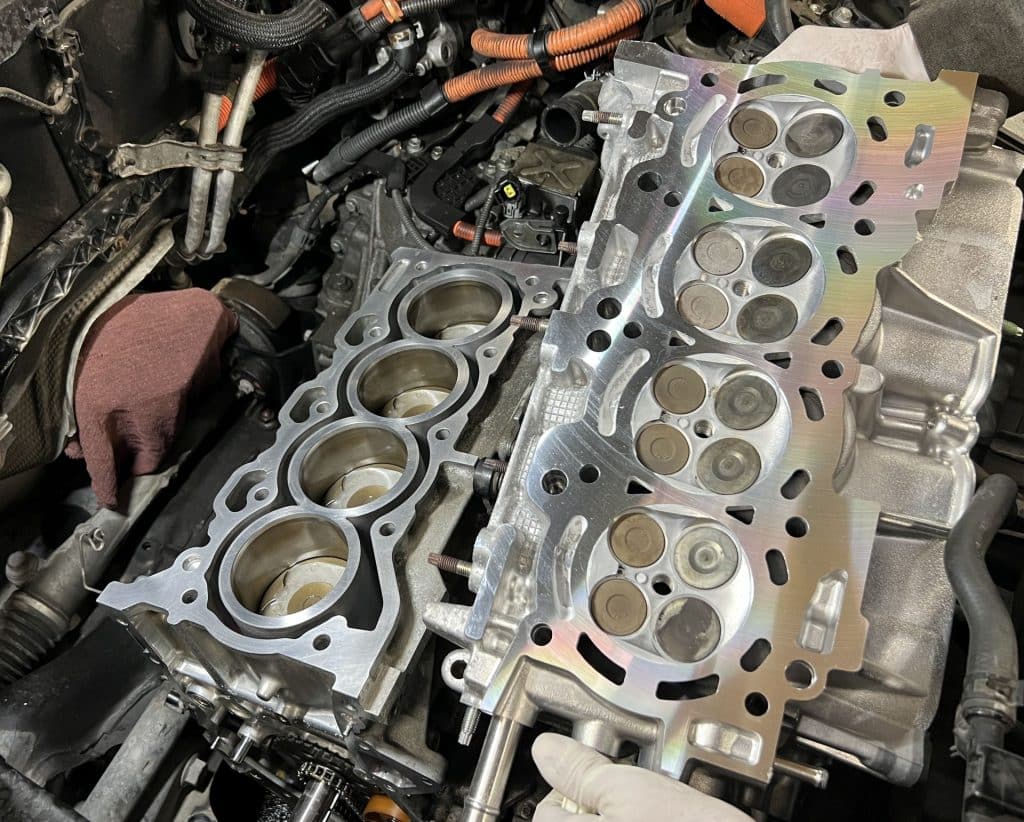
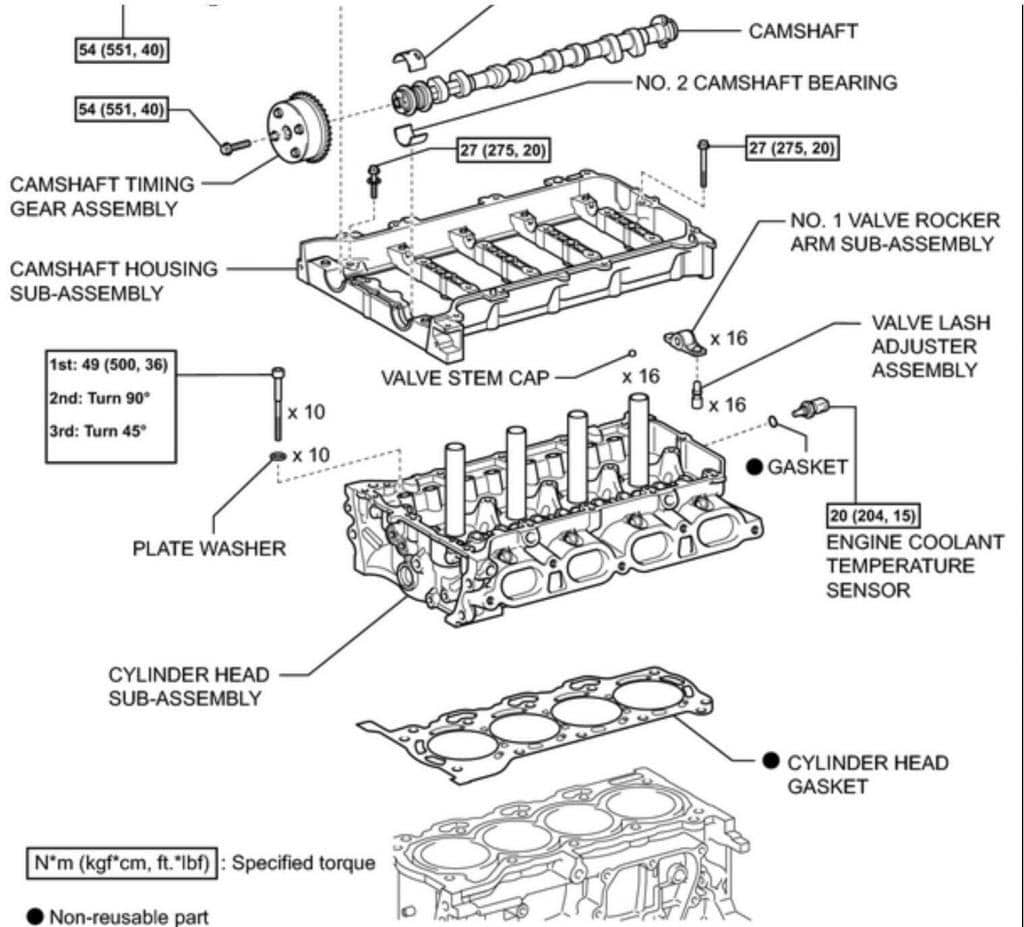
MLS head gasket
Most cars use MLS (multi-layered steel) gaskets these days, as does the Gen4 Prius. MLS gaskets have a few layers of thin carbon steel that are embossed and crimped in critical sealing areas.
This type of head gasket is able to seal higher pressure than the older composite gaskets, but it’s not without faults. They aren’t very good at sealing less-than-perfect surfaces. Pits, scratches, or a rough surface will cause premature failure. To combat this, manufacturers often apply coatings and sealants to the gaskets.
Modes of Failure
The head gasket seals the combustion chamber, coolant passages, and the oil galley. Usually, a head gasket will develop one of the following types of leaks.
- coolant passage to combustion chamber
- coolant passage to oil galley
- combustion chamber to combustion chamber
- external coolant leak
- external oil leak
The Prius head gasket usually develops a leak between a combustion chamber and a coolant passage. Coolant leaks into the combustion chamber and is then pumped out the exhaust as steam. When the engine isn’t running, coolant from the pressurized water jacket can leak into the combustion chamber. This is a big problem on the Prius since the engine stops running frequently.
The Prius pictured to the right also had a leak between the oil galley and the water jacket. Oil should be clear to brown. This coffee and cream color is a sure sign the oil has been mixed with water.
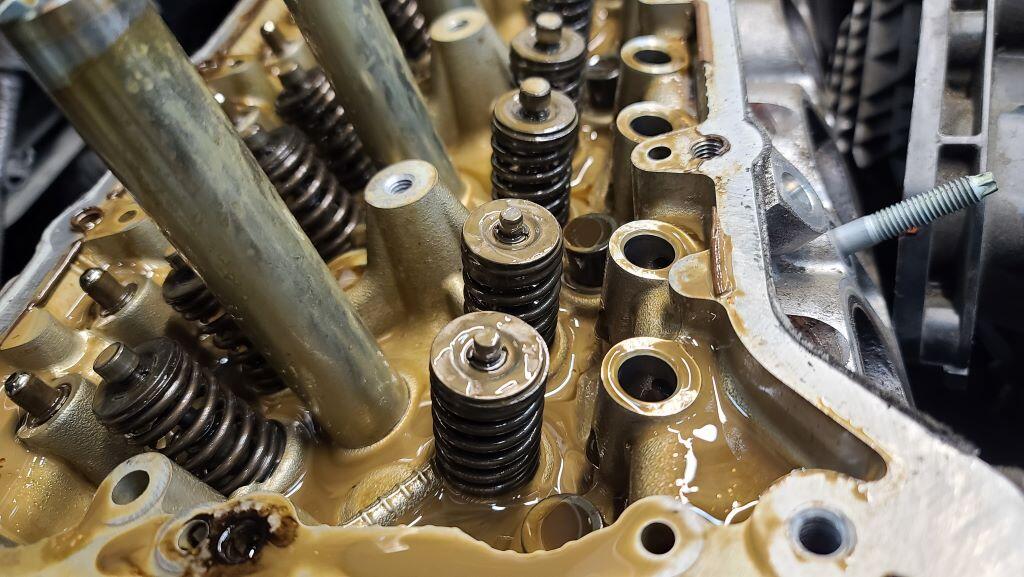
Symptoms of a leaking head gasket
Often a misfire is one of the first symptoms you’ll notice on a Prius with a leaking head gasket. A misfire on a Prius usually fairly dramatic.
The engine will knock, shake, and rattle when it starts up. The misfire is caused by coolant leaking into the combustion chamber and fouling the spark plug. The engine will continue to misfire until the plug dries off.
Prius specific symptoms
- The car will shake and rattle when the engine starts.
- The check engine light will flash while it’s running rough.
- Then it will eventually smooth out.
- However, the next time the engine stops for a while, the problem may return.
Possible additional damage
The other problem with coolant in the combustion chamber is this: coolant can’t be compressed. If there’s enough coolant in the combustion chamber, the powerful electric motor can actually bend the connecting rod while trying to push the piston into a space already occupied with a non-compressible liquid. This isn’t common on non-hybrid vehicles because the starter motor is so much less powerful. On a conventional car the engine usually just stops cranking.
Luckily, bent connecting rods are relatively rare, but we’re always sure to check. There’s no point in putting a new head gasket on a badly damaged engine!
Checking for bent rods is easy. We check the piston heights relative the deck surface. If one piston is sitting lower than the others, there’s a bent rod. If not, we can reassemble with confidence.

What caused the head gasket to fail in the first place?
If the car over-heated, that’s a very likely cause. When aluminum gets hot, it expands and grows larger. The head and the block are bolted together tightly, so the head is constrained in some spots, and will buckle away in other spots. In areas where the head buckles away from the block, pressure on the head gasket is reduced, allowing it to get hot and fail.
The water pump on the 2010-2015 Prius is electric. If the water pump fails, the master warning indicator comes on. This is the same light that comes on for everything though.
There’s also a small thermometer icon that appears on the dash, but many people miss it. Anyway, if you ever find a P261B, P261C, or P261D stored in your ECM, take it seriously.
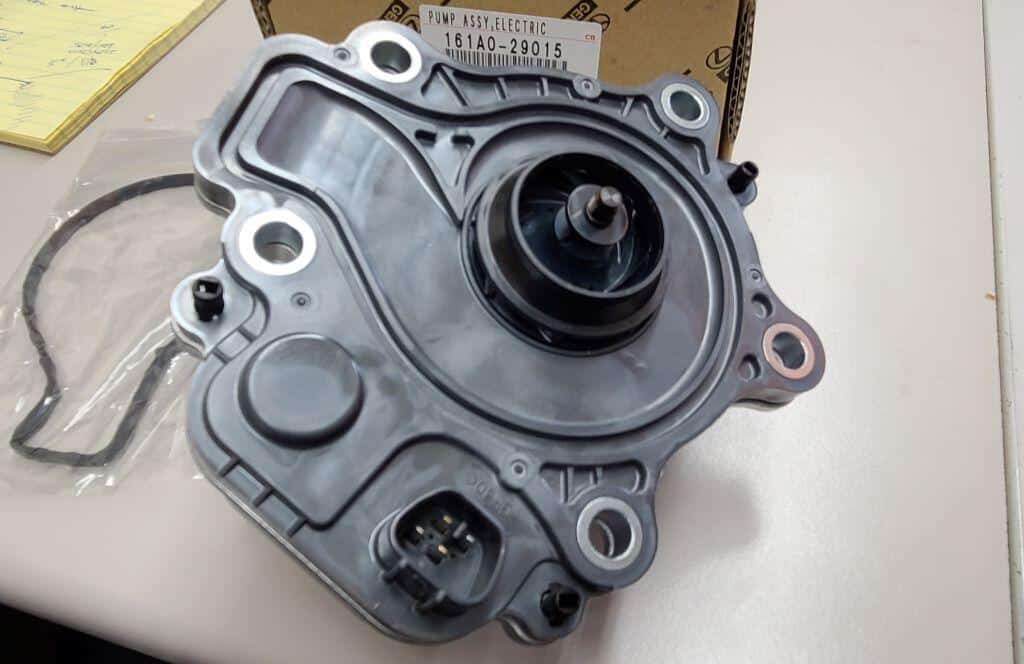
However, I’m convinced that not all Priuses with blown head gaskets had an overheating incident. I’ve seen many with no codes in history, no burnt smell in the oil, and nearly full coolant.
Why did these fail? I figure that it’s either design or assembly. I’m leaning toward assembly since many Gen3s go 300K miles and never have a problem.
Many times, head bolts creak and pop on removal, which makes me wonder if they were lubricated at the factory. Clean lubricated head bolt threads are critical to proper cylinder head clamping force.
Can you keep driving with a blown head gasket?
No, please don’t drive with a leaking head gasket. As I mentioned, bending a rod is possible on the Prius. Also, there are all of the standard reasons not to drive with a leaking head gasket.
Coolant might get low, and the engine might overheat. The coolant in the exhaust and misfires can damage the catalyst. And while a certain amount of steam in the combustion chamber can do a great job of cleaning up carbon deposits, it probably does a pretty good job of cleaning oil off the cylinder walls as well.
Prius head gasket replacement cost
Each head gasket replacement is a little bit different. Nobody can tell you exactly what your car will need until the engine has been disassembled and inspected.
That said, anybody who has done a few will have a pretty good idea what the car is likely to need. An experienced honest mechanic will give you a minimum realistic price before starting the work. A shady shop will give you the minimum possible price, even though they know that your car will almost certainly need more than what they included in the quote.
No matter what the quote, expect it to go up, at least a little bit. We aim for “minimum realistic”. We include the things that are “always” needed based on our experience with other Prius head gasket repairs. However, we don’t have a crystal ball, and we won’t know the the head is damaged beyond repair, or one of the rods is bent, or if the deck surface is troughed, until we take it apart.
Here’s what they almost always need:
- Removing the cylinder head, inspecting, and replacing the head gasket (obviously)
- Pressure wash the cylinder head. Cleanliness is important.
- Strip the cylinder head. This isn’t necessary to replace the gasket, but it is necessary to pressure test or resurface the cylinder head.
- Pressure test the cylinder head. Not all cracks are visible, so this is an important inspection.
- Resurface the cylinder head. Now, there are those who will say the cylinder head should only be machined if it’s warped. I’m going to disagree. Toyota says the head can be reused if there is less that 0.002″ of warp. However, pockets deeper than 0.0005″, may cause the new head gasket to leak. There’s really no easy way to check for this, and machining the cylinder head is faster and cheaper than checking.
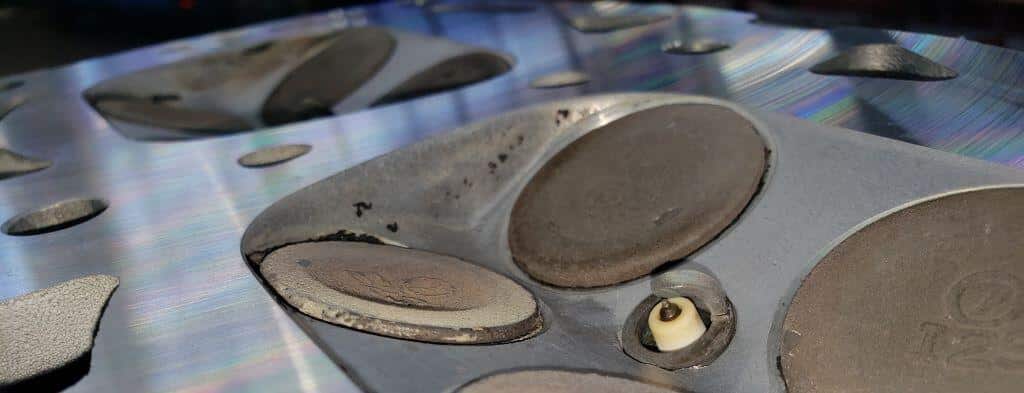
Here’s some things you might need:
- A new cylinder head. Cracks, distorted cam journals, and excessive warpage make replacing the head mandatory.
- A new block. Bent rods and damage to the deck surface can’t be fixed for less than a new short block.
- VVT cam sprocket. If you haven’t been diligent with your oil maintenance, this hydraulically adjustable cam sprocket may be sticking.
- A new water pump. If there’s a P261x code, it’s a no-brainer. If not, you may want to consider replacing it anyway. The labor is free since the water pump must be removed to replace the head gasket.
- Cylinder head bolts. We measure the length. If they’re stretched beyond specification, they must be replaced.
- Various and sundry parts. Air filter, plugs, mounts, radiator cap and other items.

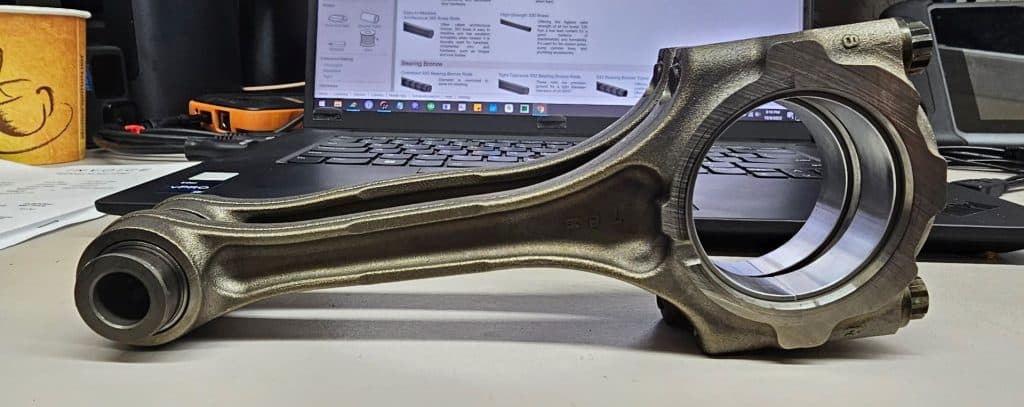
The motor/generator 1 starts the engine and is more than powerful enough to bend a rod if a combustion chamber is filled with coolant. Liquid (unlike gas) cannot be compressed.
Will your Prius be like new after the repair?
Well, the head gasket will be like new. The rest of the car will be the same as it was. Typically, we’ll be fixing up anything we find along the way, with your permission, but despite the expense, it’s not a full vehicle restoration.
As of this writing it’s 2021 and most of the Gen3 Priuses are in pretty good shape and worth fixing. However, maybe yours isn’t. When in doubt, it’s best to do a full inspection before embarking on a major repair.
Final thoughts
Hopefully I’ve answered some of your questions, but reading an article is no substitute for communicating with your mechanic. With large projects it’s very important that everybody is on the same page. Take your time to ask questions and make a considered decision.
You don’t need to make a choice right away when you get a “bad news” call. Hang up, think it over, ask questions, and repeat if necessary. When a customer says, “Go ahead” right away and then hangs up, we worry, because we know there will be questions later, when it’s too late to change course.
Other Reading
Here’s what to do if your car starts to overheat
Should you rebuild your engine?
TIG Welding – Aluminum Cylinder Heads
